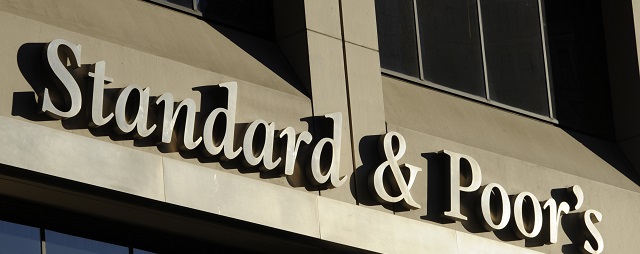With the benefit of hindsight, the whole thing really looks like a big irony. First, the US regulator handed out powers of supervising debt issuers’ solvency. At the receiving end there was a bunch of companies, which then began to bill issuers to carry out exactly that task. The conflict of interests from this new deal was only obvious, as the private watchdogs must feel obliged to tread carefully with their own clients’ records. Furthermore, the government regulator ordered those agencies to publish the basic lines of their analysis patterns, turning a blind eye to the fact that three of the companies had effectively formed an oligopoly with a 96% market share under control.
But it was last February that the courts sued the largest of those three firms and asked for a compensation in cash equivalent to five years of profits. The reason? Well, apparently, the agency didn’t check its clients’ valuation in an independent manner, and worked in probable collusion with its two other competitors.
In essence, this is the rationale behind the US Department of Justice versus McGraw-Hill, owner of Standard & Poor’s. It is a 119-pages complaint, filled with esoteric names: not just those referring to acronyms but so the very language of the document sounds, too. Perhaps this would be an apt occasion to study the extraordinary creativity financial entities have displayed when christening their structured products (mainly collaterised debt obligations or CDS), precisely the ones that sit at the centre of the subprime mortgage crisis, and which also are at the core of the lawsuit: Delphinus, Gemstone, Bonifacious, and what about Sorin–yes, the vampire character from the Salvation online game.
Rating those assets triggered a 55.4% operating profit rise in 2006 for McGraw-Hill, according to the company’s own statements. It is no surprise to learn now that in March 2007 S&P director David Tesher called a meeting with analysts on the 41 floor at the agency’s New York headquarters where he explained that, due to a developing credit drought and the general economic slowdown, more clients were seeking to re-package mortgage debt into saleable CDS. “Try to be cooperative,” Tesher told them.
And S&P was nothing but cooperative, indeed. In one of its internal presentations’ literature, it read that gross data should guide statistics models to check asset correlation and default possibilities; when conclusions clashed with the agency’s “business needs”, though, parameters could be fiddled with to “adjust” the final results.
Yet, the problem wasn’t just the forced flexibility implied in the S&P models to rate AAA what should had never been awarded top quality grades. The supervisory models themselves were incorrect, to start with. The US Department of Justice says S&P was aware of it, but did nothing fearing stricter analysis rules would upset clients.
That is what deterred the upgrading to version 6 from the Levels 5.6 system used by S&P. It was never implemented: while the old system informed grading actions with a 166,000 fix-rate mortgage data base, the new one pooled figures from 642,000 fix-rate and variable-rate mortgage data base, which was meant to be more accurate. Could it have helped to prevent the crisis? We will never know.
Will S&P end up punished? That is another question to which observers feel increasingly confused, too. In fact, the US Department of Justice seems to be shifting its attention to the collusion aspect of the whole mess, a move commentators see as proof that, in legal terms, it might be more difficult that thought to confirm S&P’s wrongdoings. For instance, in the past, the US regulator, the SEC, already blamed some issuers after finding out that they had provided S&P with poor data, as in the case of some CDS in 2007 for which the Japanese bank Mizuho wanted to obtain the triple A. The SEC says now that S&P was responsible, too, in misleading investors: can the SEC change its mind and retain its credibility?
And remember, on the other hand, that this is a civil claim, by the way, not a criminal one.






Be the first to comment on "S&P, Moody’s, Fitch: low competition, high incompetence"